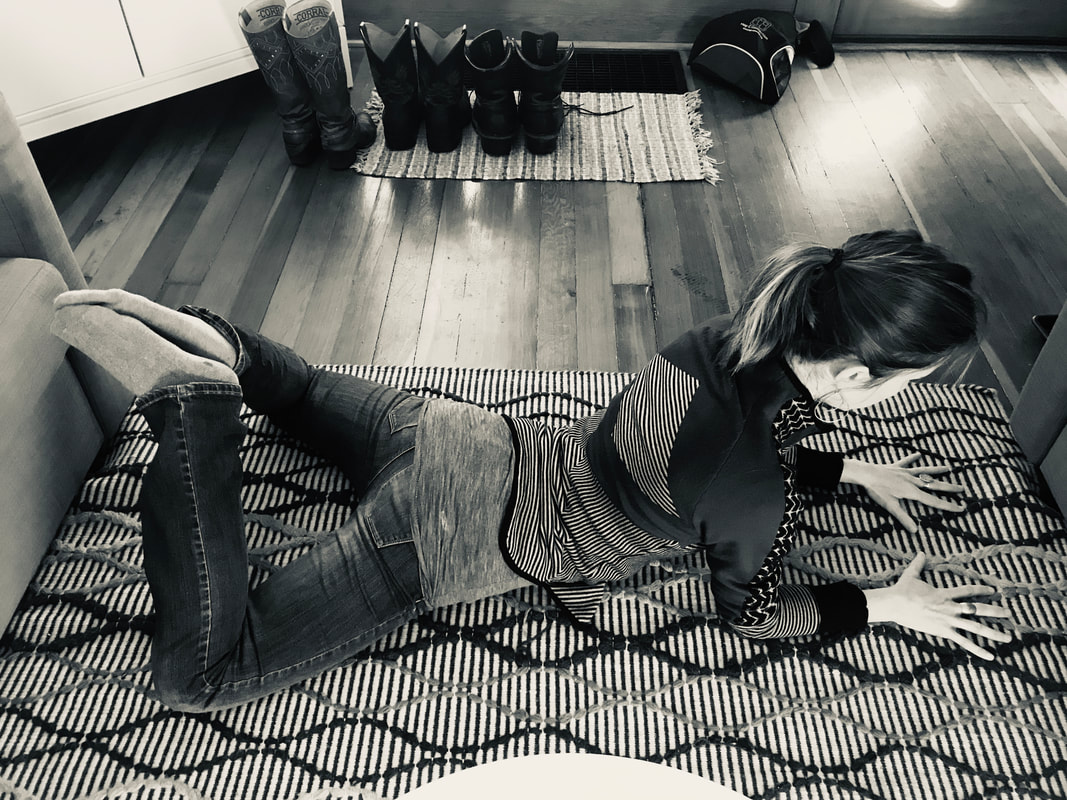 We live in remarkable times with an intergallactic platform and ideas of intellectual property. Sometimes I forget the intricacies of the universe and believe that my teaching belongs to me. (This is adorable). How do we request reasonable compensation, honor our teachers, respect boundaries, and not trample on one another? I’ve done this with a lot less grace than I would have liked - giving away my teaching for no compensation, forgetting where precisely I learned a teaching, and gotten territorial when I felt like someone was selling my teaching verbatim (or had outright stolen and reattributed my stuff word-for-word). Here’s what I know: Reciprocity is a value Does this mean you must be compensated to teach the yoga to the people? No. Does it mean that you must be thoughtful about how you exchange your time and energy? Absolutely. I believe strongly in bringing yoga to populations who cannot access public yoga classes - those who are hospitalized, incarcerated, and homeless. I also believe in valuing the work that we do in an interdependent world. When I go to the grocery store, I don’t ask for a discount because “I am a starving yoga teacher,” I pay what they ask, so I charge what I am worth. This is our cultural agreement in the West. Reverence is a value You may have heard me call myself “irreverent,” which is also true. I have selective reverence, and I value all of my teachers - those who sat at the front of the room, and those who kicked me when I was down. I give attribution to a teaching that is passing through my lips or hands by sharing the name of the teacher, what they taught me, and how I interpret it differently. Spewing quotes in yoga classes is not teaching. MLKJ said some wickedly impressive stuff and deserves attribution. AND deserves for what he offered to be mixed with what it means to you, how it relates to your students, and where and how you agree (or not). Reverence looks like this: “If I cannot do great things, I can do small things in a great way.” MLKJ Don’t just leave it there. Don’t make it about alignment in chatturanga. Tell me how small acts of self-love, like making the bed in the morning so I have something nice to crawl into at night, or acknowledging the existence of my yoga mat neighbor are opportunities for small greatnesses. Tell me a modern parable about a kindness that was repaid 1,000 times over. I’d also like to shout back to Anne Lamott who says that your story is your story, and if people didn’t want you to write about them, they should have been nicer to you. Kick me when I’m down? I’m gonna learn from it and teach it. (You’re welcome). When is it flattery and when is it flattening? Sometimes I read or hear the influence of my teaching, and it warms my heart. Teaching is my legacy, and it feels nice to know that what I taught someone resonated with them to the extent that they are passing it along. That is the goal of teaching, is it not? I don’t want a statue built in my honor, but I do want people to suffer a little less for the suffering I have experienced and learned from. Other times, I see people give handouts that I created with my name somehow missing. That feels different. Clearly, if it were only the teaching that mattered to me, this would not bother me. I would be grateful to see the lessons passed along. But I don’t think it’s just solid ego either. Sure, it feels like my legacy is unimportant if I don’t have attribution, but it is bigger than that. My opinion on the matter, is that teaching is how you interpret the various life events that have come to you, whether they come to you as teachings or otherwise. It is essential that you take this in and interpret it back out. If you simply redistribute the teaching of someone else, it misses this critical step, so when your students ask you for your opinion on the matter, or for some deeper nuance, you may be lost in the woods with no sense of how you got there.
0 Comments
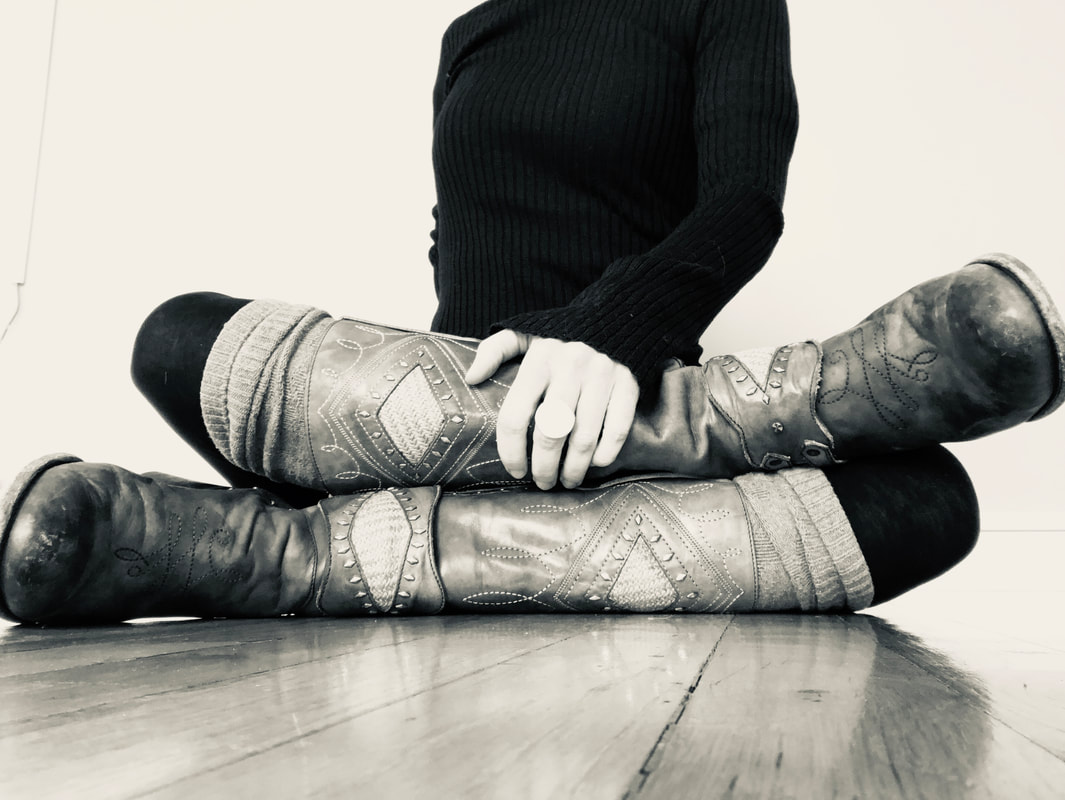 When I teach the anatomy sections of yoga teacher trainings, I ask the teachers-to-be to brainstorm a list of all of the things you could do with a hammer. Nail! Break ice! Play croquet! Make art! Break a window! You get the picture? Then I tell them why. Approximately 1,000 years ago (or 2012, whichever comes first) I heard iconic teacher David Swenson say “Yoga is a Hammer” in response to a panel discussion about the article “How Yoga Can Wreck Your Body.” (I’m sure you can google it). This teaching had a profound impact on me personally, and on my teaching of yoga and teaching of yoga teachers simultaneously. My interpretation of this teaching, “yoga is a hammer” is that yoga is just a tool. You can use it to build your body or to break it down. Teaching yoga to a room of students is similar to teaching hammer skills to a room full of construction students. You are handing a hammer to each one, and trusting them to do the right thing, to follow your instructions, and to ask for help if they don’t understand you. Your student might be in class to repair their body. Quiet their mind. Cultivate a tight ass. Or they might be there to beat themselves with a hammer. (I have done this). I have used yoga as a hammer in so many ways, including to beat myself up about why I can’t do something, why I don’t look a certain way. I have attempted to force, I have worked in anger. I have also used it to rebuild my confidence, to re-train posture, and to bond with my fellows and friends. People will tell you that yoga can damage your body, but for some reason we give them a lot more social media attention than we give to people who post that you could get into a bicycle accident, or hurt yourself skiing, or miscalculating your step off of a moving walkway. Of course yoga can hurt a body. Repetitive movement can hurt a body. Overconfidence can hurt a body. Life can hurt a body. Does that mean you should not live? May I encourage you not to concern yourself with all of the bizarre, freak ways in which yoga could damage a body, and instead to concern yourself greatly with the ways in which you can teach discernment, self-awareness, and autonomy? These things will support your students when they play basketball on the weekends, balance their checkbooks, and discipline their children in addition to supporting their bodies in the practice of yoga. Bodies want to be healthy. They want to heal. It is in their nature to do so. Teach your students to practice yoga like a turtle with a hammer. Slow and steady. Build up to physically challenging moves. Laugh at people who suggest you put your foot behind your head as a method of reaching enlightenment. Move slowly in the direction you’d like to go rather than forcing your body into pushups and handstands. If they are fun, if you are nimble and young and full of joy for being upside down, then sally forth. Slowly. Like a turtle. When you see or overhear a conversation about this idea that yoga will wreck your body, offer a one-sentence, succinct and true answer, and move on. Here is mine: “Yoga is a hammer, I am a carpenter, and you can be, too.” (Use your powers for good). I recently had a rough flight. Bumpy landing. Maybe lost a wheel or two. Maybe refused an oxygen mask in lieu of muscling through impossible circumstances. But the flight is over, and we’re walking away, and I find I don’t need to talk about it anymore.
(This is a metaphor). The last chapter of my life is in the crash-landing position, heaving, with its head between its knees. Wondering which way is up, and if there is a ground, and if we’ll make it. Simultaneously, I have become terrified of flying. I do it anyway, and pretend to be cool, except when I also jump six inches when someone taps me on the shoulder with pretzel mix and a napkin. (Who eats pretzels with a napkin, the Queen?) When I start to panic, I listen to Jaya Lakshmi & Ananda Yogiji, and in my fever, often have a visual of a plane full of white ninjas, the Kundalini tribe, chanting, smiling, and washing their cares away in that sweeping motion - arms over the head. Wahe Guru. Mantra. The power of words, intention, repetition. It gets me through the flights, and it’s getting me through this. (I think I can.) We start teaching mantra for a the same variety of reasons we teach anything: we saw someone else do it, we think we’re supposed to, it’s on a list of objectives provided by a studio, we want to be cool, we actually understand and like it. If I teach mantra, it’s usually dividing the class in three and starting the right side first: “Row, row, row your boat…” Which, as it turns out, is a pretty decent mantra. In my class we bless the rains down in Africa. We howl with Shakira. We groove with the X Ambassadors who believe we are SO gorgeous, and we like our sugar with coffee and cream. Thoughts become words, and words become actions, and this makes words a really interesting middle man between what you’re doing (actions) and why you’re doing it (thoughts). Yoga says change your words, change your life. (I’m paraphrasing). The genre and the language are less important than your connection to the meaning. When you are in the Seat of the Teacher, you are flying the plane, my darling. Your thought-mantra gets blasted over the PA system while the message you’re trying so artfully to convey with your spoken words can get lost. It’s a lot of responsibility, and it starts with you. Mantra is your oxygen mask. It won’t teach the class or fly the plane, but it will help you think clearly. (Don’t forget it). 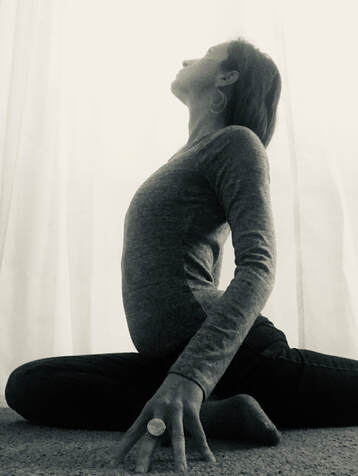 When I first retired from my fancy-pants career in 2011 to teach the Yoga full time, I was surprised to find myself in a remarkably precarious position that did not involve being upside down or folding any part of myself in on itself like a transformer. I had anticipated showing off my badass body folding skills, but I wasn’t ready for the real challenge. I found myself on a pedestal. People were looking up to me - modeling their behavior, their dress, their dietary choices after mine. And I let them. Yes! I thought. I’ve never had a traffic ticket, never used drugs… I really am morally superior. Go ahead and do as I do, and you’ll crush life. Except they couldn’t quite figure it out, so I had to help them. Stay after class and sort through their problems, wipe their tears, and offer advice. Lots of it. Good advice, too, if I do say so myself. And this was very effective! It didn’t change their lives for the better (or mine, if I’m honest), but it did distract me from the elephant-sized problem I was trying to ignore in my own life. The details, as always, are irrelevant. Except to say that I could not outrun nor could I dance faster than my own misery and I came tumbling right down off of that pedestal in a public way. Twice. Loads of people abandoned me, and I don’t blame them for a second. I was dishonest and “helpy.” Others became angry and felt betrayed, others wanted to help, and a few showed me how to teach. They sat there as I lay beneath shame and a badly bruised ego, crying next to the pedestal that used to hold my impeccable moral compass and said things like “I know,” and “that must be hard,” and “you will live through this.” They did not fix me, nor did they attempt to. And they were right, I lived through it. If you teach long enough, this will happen. Both the pedestal and the falling off. It will happen over and over again until you figure out a few things about yourself. Here are the few that I learned, in a form that I hope you find useful. THE DETAILS ARE IRRELEVANT: You do not have to tell your students your story. The whole story or part of it. But do not pretend that you belong on a pedestal, and if you find that a student is placing you up there, kindly remind them that you’re more comfortable on the ground. Authenticity is the jam, and does not require you to bare your soul in class or on the internet. NO ONE IS BROKEN: There is absolutely a power dynamic in the student/teacher relationship, and it’s important to acknowledge and respect that. However, believing that you are ‘better than’ requires you to also believe that they are ‘worse than’. You might not be doing this consciously, and that is my invitation here. You are a yoga teacher, and fixing people is not in your job description. YOU ARE NOT ACTUALLY ABLE (OR ALLOWED) TO FIX PEOPLE: Neither is anyone else. Dentists can repair broken teeth, doctors can stitch broken skin, veterinarians can prevent your dog from licking a wound, but no one can fix another person. All we can do is cultivate the circumstances where healing can occur. I do this the way my people did this for me, with a few key phrases and mostly just listening. Here are a few of my phrases. They are not brilliant, but they are easy to memorize and remind me to shut my mouth. “That must be hard” “I don’t know what to say” “I’m glad you’re here” BONUS: YOU ACTUALLY DO NOT HAVE TO LISTEN TO YOUR STUDENTS, FOR THE RECORD This is not harsh, this is responsible. If you’re present to teach a class, that does not necessarily mean you need to listen. Remember, the details are irrelevant? It’s ok - healthy - remarkable, in some circumstances to direct someone to a more appropriate audience. “I’m going to stop you - thank you for trusting me to hear your story - I’d love to connect you with someone who can offer you the support you need.” You see? Boundaries are a sign of health. 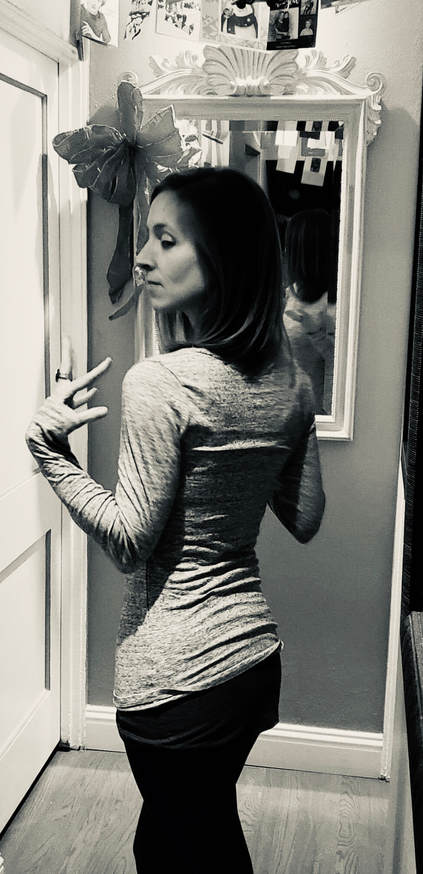 Today my social media feed is about people giving up on New Year's Resolutions, before the new year begins. Congratulations for quitting without starting. This is the best way to ensure failure. If you’re feeling a bit glum this year, as the economy is unstable, as our leadership leaves something to be desired (like leadership), as you are snuggled into your cozies and hoping for spring, read on. I have some ideas. Let me take a gander at your personal story right now, if you’re in the dumps or adrift and feel a bit purpose-less. You had a rough experience. You found yoga. It helped! You decided you wanted to teach. That made it better for a little while. Then you had another rough experience, and another, and maybe a few more, and wondered how it was possible that life is not indeed perfect and problem-free now that you have accomplished your goal of teaching yoga. Now you wonder if you have to be vegan, or lose 10 pounds, or stick a handstand to level-up your happiness. Am I close? The unfortunate thing about the hedonistic treadmill (where we chase goal after goal after goal, and are only happy for a brief moment) is that we are chasing happiness outside of ourselves. Happiness does not come with the achievement itself, but with persistence and perseverance. It comes from within. For the love of the game? To enjoy the journey? Happiness is a practice you build. A garden you cultivate. If you spend your energy trying to look happy, you will look happy. You might be able to balance on your hands, wear tight pants, drink green smoothies, chant, assemble a banging playlist, quote from the Gita (in Sanskrit!), make a killer vegan pot roast, and still find that life includes some foul lesson plans. So if you’re down and a bit angsty about the idea of a resolution, I implore you to please try this one: Be kinder to yourself. It will make you happier, because your loudest critic will be off your back. Do a little bit every day, perhaps as though you are offering an investment in the experience of who you will be tomorrow. Plant the seeds that could grow into experiences you will enjoy, like opening a tidy sock drawer, waking up fresh rather than hungover from alcohol or Netflix, or with a plan you’re looking forward to. It is not a guarantee that the seeds will germinate, that you will feel happy, that life will improve, but you will have done your part. This will help you sleep better, (which may indeed be the secret ingredient). Integrate the experiences and lessons of the day. If you learn the lesson the first time, the Universe will not have to raise her voice and make you even more uncomfortable. Resolve to create wins. Count them. Share them. Celebrate them. Do not give up before you start. 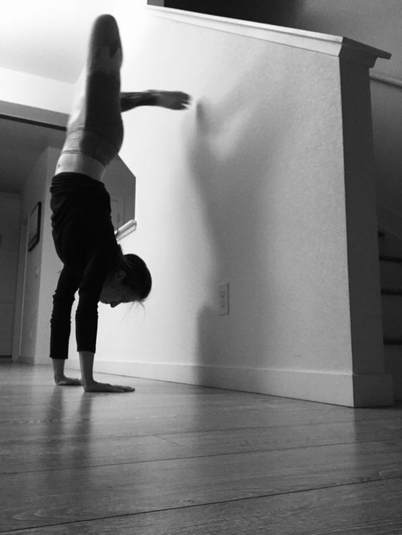 The author, showcasing her ego. The author, showcasing her ego. It took me decades to realize this simple truth about humans, despite training in archeological and forensic anthropology. Humans are so weird! We are bipedal! We walk on two legs, and our limbs have evolved to accomplish different functions. I can look at a human femur and tell you some basic information about the person who grew it - their relative age when they died, some clues about their gender and ethnicity. Their approximate height. Maybe if they experienced a unique bone-related trauma or disease. But the most obvious thing was something I didn’t realize until I started teaching yoga full time: Shoulders are not hips. (you probably already know this, but humor me). First, a reminder about the basic functions of these joints. The hip is the strongest, most stable joint in the human body. It’s a ball and socket joint, and it’s there to bear the weight of our giant heads and torsos as we walk/crawl/climb. It’s strong enough that we can carry babies, firewood, and unreasonable quantities of chapstick. In addition, it’s kind of flexible. You can rotate the hip (go pigeon-toed or duck footed), or abduct or adduct it (clap with your legs), or flex and extend (march and skate). So why. Dear god. Do you want. To put. Your foot. Behind. Your. Head? ? This is how yoga gets attention, how yogis get famous on Instagram, by turning their shoulders into hips. (It’s also how they end up with pain, damage, or schmancy new bionic joints!) Shoulders are for carrying things, crawling around, and climbing trees and rocks. They are incredibly mobile, and sort-of stable. They are kind of like ball and socket joints, but unlike the hip, the shoulder socket is made of some bones and some soft tissue. That gives it loads of flexibility, but less stability. So why. Dear god. Do you want. To stand. On. Your. Hands? ? I know why, and trust me, I have tried to make my shoulders into hips (handstands) and my hips into shoulders (foot behind the head). These things are not inherently bad - you can (probably) train your body with thoughtful yoga practice or other exercise to request that your hips become more flexible and your shoulders become more stable. The slow and steady way is the jam in both cases, as our bodies are resilient and adaptable (we can walk in high heels!). But why? It might be because you need a goal. You’d like to climb a mountain, but what with work and the toddlers it’s not a “this year” goal. Cool. It might be because you want your ex to stumble across your photos on IG and see how strong and/or flexible you are now, so they will miss you and regret the day they let you go. Alright. It might be because you had a yoga teacher who told you that your body could do anything you wanted it to do, you just had to work diligently at it and someday, your body would submit to your training, conditioning, punishment, wishing, etc. This is where I draw the line. The first two reasons are your ego (this is almost always the answer to why we do the things we do), and the third reason is someone else’s ego. Someone in a position of trust and authority, who is abusing their powers, training, and seat of the teacher to tell you something that is categorically untrue. They might be doing this because it is what you want to hear, in which case, they are seeking your approval. It is not your responsibility to provide approval to your yoga teacher! They might be doing this because they are repeating something they have heard without fully understanding the implications of what they are teaching. Shoulders are not hips, you see, and nothing short of extreme elective surgery will make it so. And even that will not make you happy. Achieving the goal will be good for a few minutes, just as the sweet (vindictive) victory of making someone else jealous. As you move onward in your teaching, be mindful of making promises to students based on this misinformation. Some hips cannot do lotus pose. Some shoulders cannot orient themselves in a way that is safe to bear the entire weight of a body. Yoga asana is not magic. It is just as able to build up your body as it is to break it down. It’s a tool. It comes in a boxed set with some other tools that might help you address the root cause of your suffer, like, say your ego? Shoulders are not hips, baby, and they don’t have to be. (you are perfect anyway). I devoted many years to the study and teaching of prenatal yoga. I have a separate blog, geared towards students, but have found many of these posts are relevant to yoga teachers. Here are the "best of."
Benefits of Prenatal Yoga Why your students might enjoy and appreciate this practice in addition to or instead of other classes. Yoga Plus One How to modify yoga for a pregnant body. Prenatal Yoga for Bedrest How to leverage the deep well of yogic practices when your body is on bedrest. I am pleased to be a lead instructor with Enso's Prenatal YTT program. Learn more & register. What is feedback?
Feedback is helpful. It is perspective from another person, letting us know what went well and what didn't. It might inform what we keep or toss from our teaching, or allow us to develop a new skill. It might be opinion or fact, but it isn't criticism or commentary on your character. Some feedback is direct – you have spinach in your teeth. Other feedback is less direct – can you tell me the name of the savasana song? Both of these are helpful – you know that something isn't going as planned, and that someone likes your music. Wonderful. Why do you want feedback? Many of us resist feedback – we brace, anticipating a personal attack, or information we do not want to hear. It takes courage to offer and to receive genuine feedback. Be courageous. Few yoga teacher trainings include this essential teaching. Many don't teach how to give feedback, aside from the “shit sandwich” of early 90's office culture: say something nice, say what you mean, end with something nice. This technique doesn't work. In the best of worlds, you miss the genuine nice things someone has said to you. In a worser world, someone sandwiches their shit between two lies or disingenuous offerings, which feels even worse than the feedback itself. Example: "Sally, your savasana music was incredible. Your touch is creepy. But I think your voice is soothing." Poor Sally. What is she to feel? How does this land on you? In writing, it feels so bizarre. Right? If you've trained with me, you know how I suggest giving feedback. If not, train with me and you'll learn – it has become part of every lecture. (Sorry, I cannot give away the cow, as they say). Most students will not offer feedback unless something has gone very, very wrong. They leave in yoga brain, because very likely even if you did many things less-than-perfectly, you still taught a decent class and they feel better than they did when they arrived. If you ask, “Do you have any feedback?” They often reply, “That was great!” (This is not feedback) Occasionally someone will try to offer a criticism, particularly if you push. “I don't like half moon pose!” or, “Gregorian chants are not my jam,” or, “That hot yoga class sure felt hot!” (This is also not feedback) And, if you're really lucky, someone who has been hired to critique you will barrage you will all sorts of criticism, after a class where you knew you were being evaluated and likely made all sorts of mistakes you would never otherwise make. Things I have been told: “You say the word 'forward' too much.” “You didn't teach anything about the bandhas.” “Your alignment in Warrior 1 didn't look good.” (This is also not feedback) How to Accept Feedback No matter what comes your way, you can do a few things: 1. Say thank you... and then shut up. Clap your hand over your mouth if necessary. (I often find this necessary.) 2. Take a breath. 3. Determine the validity of the feedback. Is it actually criticism? Is it opinion? Is there a seed of truth? Is it confusing? 4. Then, if desired, ask a clarifying question. Feedback: The music was too loud. Thank you. Clarifying question: was it all of the music, or one song in particular? Clarifying question: where were you in the room? Clarifying question: was it too loud overall, or did you have a hard time hearing my voice? Now you have something you can work with. Feedback: Your touch felt creepy. Thank you. Clarifying question: can you remind me which pose I was assisting? Clarifying question: can you tell me more about what felt creepy? Clarifying question: do you know you can opt out of hands-on at any time? If you keep hearing the same feedback AND the feedback is relevant to your teaching, take note. No one likes half-moon pose. It is a stupid pose. That's the point, dear students, deal with it. If several people tell you that your music is too loud, it's because it is too loud. Turn it down. Ask for specific feedback in this area. If several people tell you that they don't like your pants, you can tell them that what they're offering isn't feedback, it's criticism, opinion, and generally unkind. You can teach about the kleshas and help them understand why they hate your pants (spoiler – it's aversion or “misdirected rage”). If several people tell you that the class was too complicated, it is. If they don't follow your direction, you're not giving good direction. If they “never seem to understand you,” that's on you, beauty. How NOT to Receive Feedback Become defensive This is so tempting. You want to tell the student why you had loud music, why you assisted them in a certain way, and fundamentally, why you are not wrong. This is not helpful. If they have given you a factual observation – like you have spinach in your teeth – denying it makes everyone look insane. If they offered you an opinion, even if it was bizarre, it is valid. It is theirs. It isn't yours. Let them have it, and let them go home. Deny what happened This is called gaslighting, and is a form of manipulation. Didn't know yoga teachers are capable of being lying, manipulative critters? We sure are! Even if we're not aware of it or doing it purposefully. Just because they offer something does not mean you need to make a change, so there is no use in denying it. You don't need to accept it as fact, simply receive it, say thank you, move on. Counterattack This is ugly and gross. I have done it, and I'm trying to help you avoid it. Someone offers a critique of you, and instead of receiving it, you launch back with some stored up angst about a shitty teaching they offered one time. You think my music is too loud? Your music is always too loud... Opinions are Like Assholes (everyone has one) Places where you don't need to ask for more clarification: opinion. If someone says they don't like your music, your pants, a particular pose, a particular style, the tone of your voice, etc., clarity is not important. You are simply not their teacher, or they are fishing for something and trying to be helpful, because no one ever taught them how to give feedback and they're just doing their best. Some People are Assholes Misdirected rage is a Thing. People assert this using the internet, and if your studio accepts online reviews, then May The Odds Be Ever in Your Favor. Sites like Yelp allow criticism and opinions out into the world sans discernment. When someone is actually upset with something that is painful to address directly, they may launch it in your direction. These people need more yoga, not less. The yoga has gotten in, and they are not sure how to deal with their ruffled feathers, or the debris in their snow globe. They need a timeout, but someone gave them the internet instead. Disregard this entirely. Never read it. Ever. Amen. Public shaming is less effective for behavior modification than positive reinforcement. This is science, from the field of developmental psychology. Shame is a useful emotion, because it lets us know when we have made an error. But it is not your job TO SHAME OTHERS. Positive reinforcement says tell the person when they do something that you like. (Also, tell them when there is spinach in their teeth). But shame is a personal attack, it speaks to character, and should be reserved for cases of gross and inappropriate conduct. Shame on you for pulling the dog's tail. YES. Shame on you for forgetting the left side. NO. Your opinion is sacred. It is valid. It belongs to you, like your anus, darling, and you can choose to flaunt it on the internet, but do so with extreme caution, mindfulness, and an awareness that your grandchildren will be able to see what you say, and may not have the cultural context you intended. If and when you are tempted to rage electronically, pause. Clap your hand over your mouth. At minimum, it will force you to type one handed. BONUS: Be the Change All signs point to us being in the Kali Yuga – the dark epoch of greed and disintegration. The Vedas say so, and while the internet tries to bring us together, it just cannot help itself. But you can. I encourage you – implore you – to begin to notice the good in the world, not just in the microcosm of the yoga studio. When someone provides great service at the book store, the mechanic, the coffee shop, say so. Directly to them and on the internet. You can Yelp or Google review, or post it to your own social media. If you want to receive information about when you are doing something great, you must offer it as well. This is not my understanding of karma, but it is still A Good Idea. “Shout out to my barista Kenny, who always remembers I want a real mug.” “Thanks to Vicky for not only fixing my brakes, but also telling me how to check them myself.” The darkness is all around. And you? You are made of light. 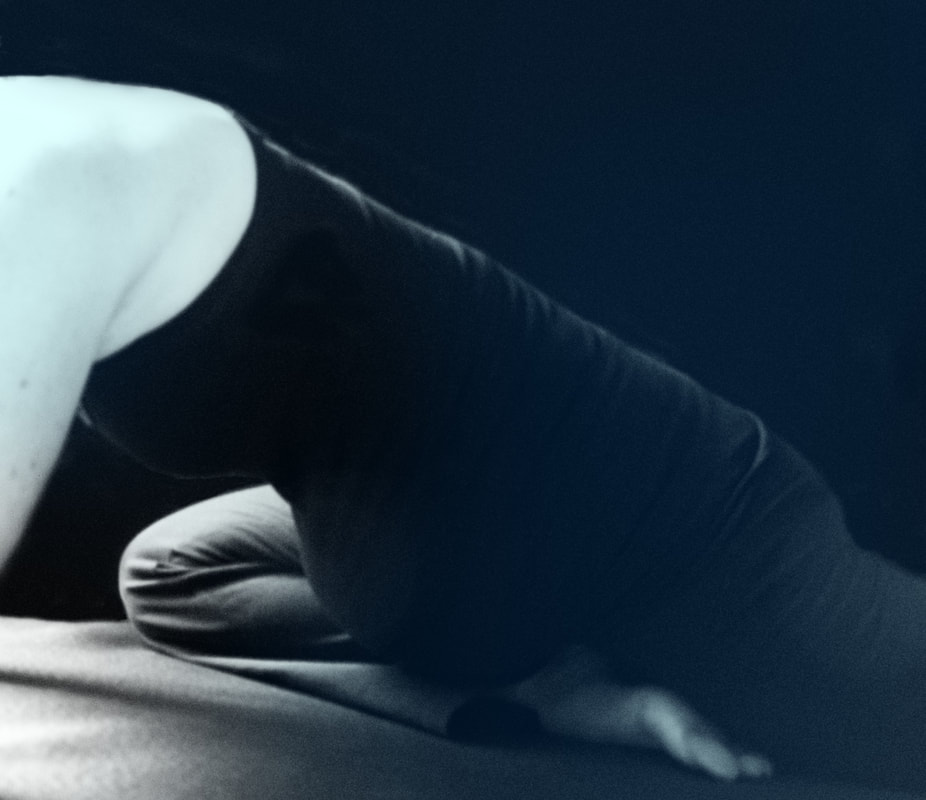 If you teach Yin Yoga, you've probably had more than a few pregnant women come to your class in search of some stretching, support, or salvation from the hotter than Hades classes offered in most yoga studios. “Why me?” you may have asked yourself. You may have felt some self-pity, some anxiety, or started to frantically google what to do and not to do. Never again. Pregnancy is a normal condition of the adult human female. It's not an illness or an injury – it is a phase of life. Believe it or not, everyone walking around was born. Most. Normal. Thing. Ever. WHY ARE YOU HERE? - Pregnancy can be uncomfortable. Sure, pregnant women glow and radiate, their hair shines, but their hips and knees might need some TLC, particularly if they sit in chairs or wear high heels as their bodies adapt to the rapid changes required to accommodate a growing baby. Both of these things can affect the way they bear the added weight on the front of the body, and yoga can help with this. People have told them this. The internet – the very same internet you're reading from right now – has told them this. - Some kinds of yoga are the wrong yoga. Heated yoga really isn't ideal for a pregnant woman. Her blood volume increases through pregnancy, and the baby has no way of cooling itself off (come see me for a refresher on elementary physics, if you have any question). Most pregnant women aren't thrilled with the idea of added heat, and ACOG, the American Congress of Obstetricians and Gynecologists says no to both saunas and hot yoga. So other teachers send pregnant women to your Yin class because (hopefully) it is not heated. - There is a monkey in my mind You may know and embrace the idea that pregnancy is normal, but American culture sure would rather everyone think that pregnancy is a CRISIS. Not surprisingly, not all women feel 100% ready to be mothers, and this can bring up some reasonable concerns about readiness for the biggest life change ever. And if a woman was prone to anxiety or depression before pregnancy, sometimes the hormonal changes that accompany pregnancy can amplify these experiences, and she – like all of us – is simply looking for peace. WHAT DO I DO WITH YOU? - Pregnant women should not practice Yin yoga, in the classical sense. Bernie Clark describes the edge of sensation in his indispensable book The Complete Guide of Yin Yoga, and this edge of sensation is the place where connective tissue receives good stress. Even though pregnancy is a normal condition, part of this normalcy includes an increase in the production of the hormone relaxin, which softens this connective tissue in a way that makes it more vulnerable. I describe the edge like the edge of the Grand Canyon – you can curl your toes over the edge, or dangle in by your fingertips. Most of us are seeking the toe curling edge. Pregnant women should stay back in the van, many feet away from the edge of sensation. - Avoid pressure on the belly, twists, and lying flat on the back. Offer alternative poses with bolsters and blankets, like a supported reclined butterfly pose, side-lying options, or creative uses of stable chairs to permit some gentle, supported muscle stretching and relaxation. You have ample time, so help her get cozy. - Tell her to practice being nurtured – like Restorative Yoga. Rather than seeking an edge, a pregnant woman might benefit from feeling nurtured. Mothering involves nurturing, and not all of us know or remember what that feels like. Rest fully. Fall asleep. Practice mindful breathing techniques. HOW ELSE CAN I HELP? - I'm glad you asked. Everyone gives pregnant woman advice, especially old ladies in the grocery store. Unsolicited advice is also known as “being an asshole,” so start any inclination of unsolicited advice by saying, “Are you asking for my opinion?” If not, then stop there. Or say, “I know a few things about pregnancy and Yin, please let me know if you would like to hear any of them.” Then stop. - Touch her. Seriously. Just not her belly. Like in any class, if you offer hands-on support, give her the opportunity to opt out. If she doesn't opt out, rub her neck, shoulders, hands, or feet. This will not break her. If it were that easy to start her labor, the induction rate in our country would be zero. - Make no comments about her appearance (feel free to apply this to everyone). She does not look tired, big, small, or whatever. She looks amazing, and you're glad to see her. That's it. Ever.  "I want to be Insta-Famous" This is the mantra of many new yoga teachers out there. I understand. Because while I don't post half naked photos of me "doing yoga" or dangling from a sex-trapeze, or rolling over some ridiculous object to "support my practice," I do get off on some external validation. I'd secretly love to know that you think I'm pretty, but I'll settle for you thinking I'm smart. So, words. I'm here to show you the nakedness of my soul, the rawness of my emotion. The real work that there is to do, once you realize that the exact location of your toes in ANY yoga posture is a complete distraction from the point. I don't care one iota where your left heel is in ANY yoga pose, if you treat your postal worker or cat like garbage. Align your actions. Your life will improve if your share your bananas, operate from compassion, apologize when you were wrong or reactive or spiteful. In my short and absurdly cushy little life, I've learned a whole heaping helping of lessons, and I aim to share what I've learned so you don't have to fly head-first into the brick wall of addiction. So you can ask for help sooner when you find yourself in the deep end of life. So you can say, honestly, and with reverence for yourself, "HELP ME I'M DROWNING." I've wrestled myself close in to some fabulous teachers - those who earn the seat on the daily through their honesty, humility, and gratitude. It is not easy in the front row, and it's not because of the spotlight. Fuck the spotlight. The spotlight is easy. Formulaic. And shallow. The real work of being a Teacher is taking the headwind. Solid enough in what you have to teach that you will fly directly into the storm. I miss the days when my life was so easy that I could obsess about my headstand, or the nuances that change between Warrior 1 and Warrior 2. As life has gotten harder for me - the practice has gone inwards. And I've found my voice, my purpose, my song. Second star to the right, and straight on 'til morning. What's yours? |
PROGRAMS for Yoga Teachers:YIN Archives
September 2019
Categories
All
|

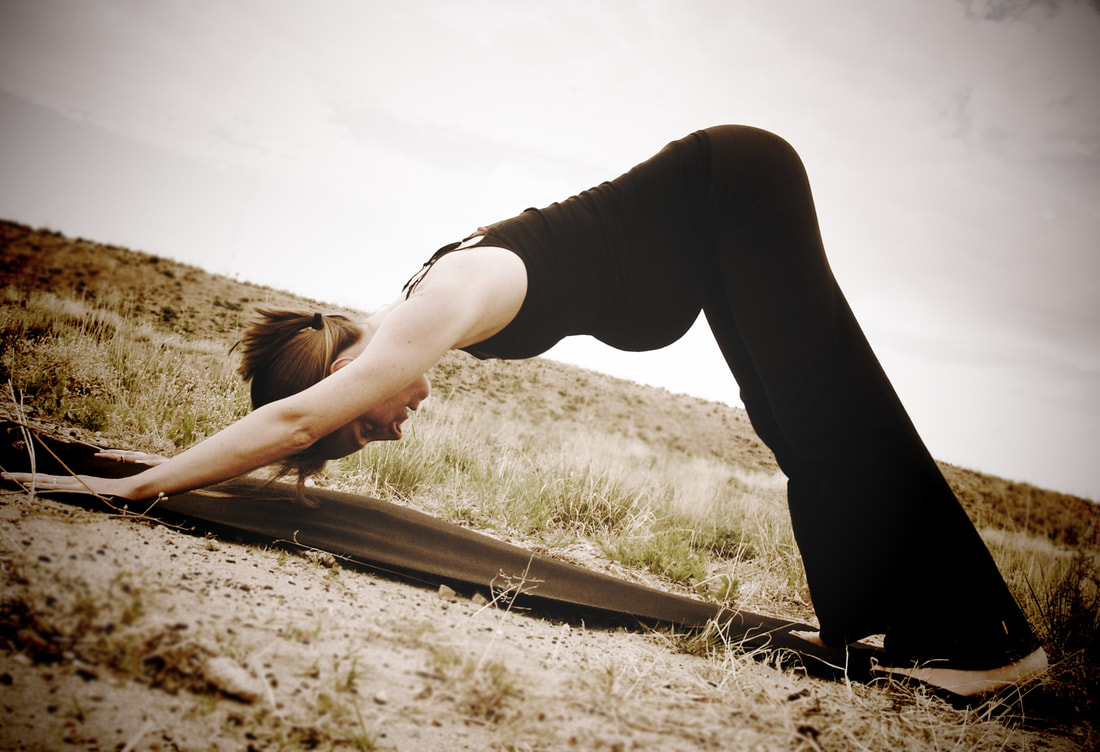

 RSS Feed
RSS Feed
